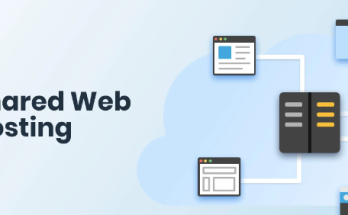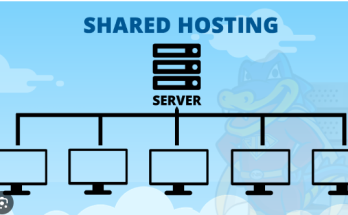I. Introduction
A. Brief overview of GoDaddy’s prominence in web services B. Statement of the issue: Perception of high prices
II. Understanding GoDaddy’s Services
A. Domain Registration Costs 1. Explaining domain registration fees 2. Comparison with other domain registrars
B. Hosting Charges 1. Different hosting plans and their pricing 2. Analysis of features and value for the cost
III. Factors Influencing GoDaddy’s Pricing
A. Brand Value and Market Positioning 1. GoDaddy’s brand identity and its impact on pricing 2. How market positioning affects pricing strategies
B. Service Quality and Infrastructure 1. Investments in infrastructure and service quality 2. Impact on pricing and perceived value
C. Add-on Services and Upselling Tactics 1. Examination of additional services offered 2. Evaluation of the necessity and value of these add-ons
IV. Customer Experiences and Satisfaction
A. Reviews and Feedback 1. Compilation of customer reviews regarding pricing 2. Common sentiments and experiences
B. Customer Support and User-Friendliness 1. Impact of support quality on perceived value 2. Ease of use and its correlation with pricing satisfaction
V. Competition and Pricing Strategy
A. Comparative Analysis with Competitors 1. Comparison of GoDaddy’s pricing with other providers 2. Identifying areas of divergence in pricing
B. GoDaddy’s Pricing Strategy 1. Examination of GoDaddy’s pricing model 2. Strategies employed to maintain pricing standards
VI. Behind the Scenes: GoDaddy’s Costs
A. Infrastructure and Maintenance Costs 1. Insights into the operational costs of a hosting provider 2. Impact on pricing strategy
B. Marketing and Promotional Expenses 1. Analysis of marketing spends and its role in pricing 2. Balancing promotional costs with service charges
VII. Conclusion
A. Recap of key factors contributing to GoDaddy’s pricing B. Suggestions for consumers considering GoDaddy services C. Final thoughts on GoDaddy’s pricing strategy and its impact
Why GoDaddy Seems Expensive: A Detailed Analysis
In the digital landscape, GoDaddy stands as one of the most recognized names in domain registration and web hosting. However, its pricing often raises eyebrows among users and prospective customers. So, why does GoDaddy seem expensive? Let’s delve into the intricacies step by step.
1. Brand Recognition and Market Positioning GoDaddy’s extensive advertising campaigns and ubiquitous presence in the market have significantly contributed to its brand recognition. With this recognition comes a premium. The costs associated with maintaining this brand image, advertising on various platforms, and sponsoring events ultimately reflect in the service charges.
2. Comprehensive Service Offerings One reason for GoDaddy’s perceived high prices is its wide array of services. Beyond domain registration and web hosting, they offer additional tools, such as website builders, email hosting, security features, and customer support. This comprehensive suite of services often comes at a higher price compared to providers offering more limited functionalities.
3. Introductory vs. Renewal Pricing Like many hosting and domain providers, GoDaddy often lures in customers with attractive introductory prices that substantially increase upon renewal. This pricing strategy might make the initial purchase seem affordable, but the renewal costs can catch users off guard, contributing to the perception of high expenses.
4. Upselling and Additional Features GoDaddy is known for its upselling tactics. While purchasing a domain or hosting plan, users often encounter various add-ons or features that seem essential but come at an extra cost. This practice can inflate the final bill and contribute to the impression of high pricing.
5. Quality of Service GoDaddy boasts a robust infrastructure, security features, and customer support. However, the quality of service and the reliability of their servers and support might justify the higher pricing compared to budget providers. The added cost might be indicative of investing in better infrastructure and support systems.
6. Domain Name Pricing Domain registration costs are not solely controlled by GoDaddy but are also subject to regulations and pricing set by domain authorities like ICANN. GoDaddy’s pricing for domain names might appear higher due to additional services bundled with the domain purchase, such as privacy protection and domain auctions.
7. Customer Support and Accessibility GoDaddy’s customer support, though sometimes criticized, offers round-the-clock assistance through various channels. The availability and accessibility of support services might contribute to the perceived higher costs.
Conclusion While GoDaddy’s pricing might indeed appear higher compared to some competitors, it’s essential to weigh the value proposition against the cost. The range of services, quality, and reliability, coupled with the convenience of an all-in-one platform, might justify the seemingly expensive nature of GoDaddy’s offerings for many users.
In the end, the decision regarding whether GoDaddy’s services are worth the cost depends on individual needs, budget, and preferences.
Why GoDaddy is Perceived as Expensive: Understanding the Costs
Introduction: GoDaddy, a well-known name in the domain registration and web hosting industry, has garnered both praise and criticism. Despite its widespread popularity, the perception of GoDaddy being expensive is a common sentiment among users. Several factors contribute to this perception, which can be analyzed step by step.
1. Domain Registration Costs: GoDaddy’s domain registration prices are often higher compared to other registrars in the market. While they may offer competitive rates for the first year, subsequent renewals often come with a noticeable price hike. Additionally, add-on services and privacy protection can significantly increase the overall cost.
2. Hosting Plans and Renewal Fees: GoDaddy’s hosting plans, particularly shared hosting, might seem affordable initially. However, the renewal prices after the initial term can be significantly higher. Users often find themselves paying substantially more upon renewal, contributing to the perception of GoDaddy being expensive in the long run.
3. Upselling of Additional Services: GoDaddy is known for aggressive upselling strategies. While purchasing a domain or hosting package, users are bombarded with various add-ons and services, leading to an increased final bill. These additional services, while sometimes beneficial, can inflate the overall cost and contribute to the perception of high expenses.
4. Discounts and Introductory Offers: GoDaddy frequently advertises attractive introductory offers and discounts to lure in new customers. However, these promotional prices are often applicable only for the initial term, and the actual cost upon renewal can catch users off guard, leading to the impression of being overpriced.
5. Quality vs. Cost Ratio: Some users argue that while GoDaddy may be relatively expensive, the quality of service provided does not always match the price. Issues such as customer support, uptime, and website performance might not meet the expectations of users who are paying a premium price.
6. Branding and Market Positioning: GoDaddy invests heavily in marketing and branding efforts, establishing itself as a prominent name in the industry. Such investments in advertising and brand positioning might contribute to the perception of higher costs, as these expenses are often factored into the services they provide.
Conclusion: In conclusion, the perception of GoDaddy being expensive is shaped by various factors, including domain registration costs, hosting plan pricing, aggressive upselling, renewal fees, and the value users perceive in relation to the price paid. While GoDaddy offers a range of services, users should carefully consider their needs and budget before committing, as there are alternatives in the market offering competitive prices without compromising on quality.



